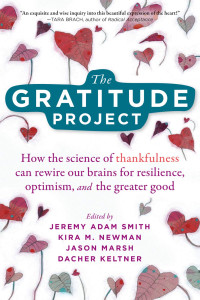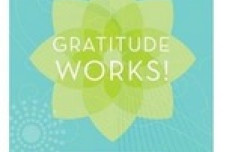In many places around the world, the COVID-19 pandemic means perpetually living under the gun. When we walk out of our doors, we can’t let our guard down. Even grocery shopping can feel fraught with danger. Moreover, many people fear for their jobs and futures. This has also been a period of intense political conflict in the United States and of fires up and down the West Coast. Seeing threats everywhere triggers stress and anxiety.
 Discover our new book about how gratitude can lead to a better life—and a better world.
Discover our new book about how gratitude can lead to a better life—and a better world.
At the same time, the pandemic has profoundly limited the scope of many lives. It’s cut many of us off from variety. It means our home-cooking, day after day, instead of restaurants or potlucks. It means being alone in our apartments—or seeing the same people every day, in the same house, and not meeting new ones in other places. There might be a lot of good in our homes, but at a certain point, through sheer repetition, we might stop seeing how others enhance our daily lives. Humans already tend to take the good things for granted—a psychological phenomenon called “hedonic adaptation”—and the groundhog-day nature of lockdown only exacerbates that tendency.
Threatening or just mundane, pandemic conditions do not make fertile ground for thankfulness. But gratitude is one of the tools we can use in both of these circumstances. When we give thanks for everyday things, we make them visible again. When we’re able to do that, numerous studies suggest, we give our happiness a little boost and train our brains to see the good, even amid so much bad.
Gratitude is a tool that many people are using right now on Thnx4.org, the Greater Good Science Center’s online journal. There, people can sign up for a gratitude challenge that prompts them to document and share “thanks” on a regular basis. They can also record times when they were thanked by someone else, and how that made them feel. We survey participants about their well-being before they start the Challenge, and again after it’s complete, in order to understand the impact of Thnx4.
When we analyzed data from the past six months, a couple of patterns stood out. We found that journaling your gratitude during the pandemic on Thnx4 is beneficial—after a challenge, people tend to be more resilient, more satisfied with life, and less lonely. However, these same effects were greater in the period before the lockdown began.
In other words, people aren’t doing as well as they were before the pandemic—but even at that lower baseline, giving thanks still helps. The data also suggest that the people using Thnx4 have been on an emotional rollercoaster: They were sadder, but felt more affection and less anger than they did before the pandemic. We also saw a significant increase in people hearing gratitude from others, which we take to be a very good sign—it suggests that we’re taking care of each other.
In reviewing public gratitudes during the pandemic period, we discovered a vivid progression from shock to acceptance—and a growing appreciation for the good things we get from other beings, including our pets, and from nature and society. A journey through expressions of gratitude during the pandemic reveals how we’re helping each other through it. And so, here, we thought we’d share examples of gratitude during COVID-19, grouped by major categories.
Romantic partners



Family, children, and pets






Friends and neighbors







Cooperation, help, and solidarity from strangers




Technology that enables connection



Jobs and coworkers



Frontline workers




Exercise and fresh air




The opportunity to help others
Thnx4 also allows users to share times when they were thanked by someone.





Time with yourself












Comments